In the early days of adapting comic books into live-action television shows or feature films things like “character accuracy” were rarely a concern to the producers of such enterprises but in the late 70s Marvel made a licensing deal with the Toei Company that would take that concept to the next level and the result would be one of the most bizarre yet amazing adaptations to date.
The man behind this wonderfully bizarre creation is producer Gene Pelc, who while visiting Japan was surprised that a culture so fond of comic books (Manga) had no apparent interest in American comic books, so he approached Stan Lee with the idea of expanding Marvel into this untapped market share. This was not, of course, about publishing Marvel Comics in Japan, instead, it was to form an alliance with Toei Company, a production company that was known for such great action shows like Kamen Rider, with the simple stipulation that “This show can never be seen outside of Japan” and with that settled the series was soon off and running, but in a fashion that would be rather unfamiliar to Spidey fans back in America. In this series, there would be no Green Goblin or Doctor Octopus to menace our hero, instead, Spider-Man would be fighting alien invaders called The Iron Cross Army, whose minions were biological weapons known as Machine Bem, creatures who could change their size and form to better threaten Spider-Man and his Amazing Friends.
Professor Monster and Amazoness.
The premise of the Japanese Spider-Man aka Supaidāman deals with the adventures of Takuya Yamashiro (Shinji Todō), a young and brash motorcycle racer who has a close encounter with an alien visitor named Garia (Toshiaki Nishizawa), the last surviving warrior of Planet Spider, and from this ancient alien, he learns that a villain known as Professor Monster (Mitsuo Andô) has arrived on Earth and plans to conqueror or destroy our world just as he did Planet Spider. Now, that sounds on par with about fifty percent of the science fiction movies and television shows of the time but where things get interesting here is that Garia injects him with some of his own blood, which gives Takuya spider-like powers, and he also gifts our young hero with a bracelet that can activate his spider costume, that not only allows him to shoot web-lines but also works as a protective suit. What's even more amazing is that it can also summon his cool spacecraft, The Marveller, a ship that can transform into a giant robot called Leopardon. One must admit that this does come in handy when the various monsters he encounters go full-on kaiju when they meet, but it doesn't have a very “Spider-Man” feel to it. What you may find interesting, is that when Professor Monster’s second in command demands to know the identity of our hero, Takuya responds, “An emissary from Hell. Spider-Man!” which is not the typical introduction most heroes would make and this leaves us wondering if Spider-Man got his powers from the Devil.
Maybe, in Japanese mythology, Hell is a nice place.
If this seems widely off the mark when it comes to the origin story of the Spider-Man, at least the one most of us know and love, it should be noted that producers Tôru Hirayama and Susumu Yoshikawa originally wanted to make the series more faithful to the famous web-slinger's origins, but Bandai, one of the sponsors, told the studio to add a giant robot, what with them being all the rage at the time, and thus each episode would start off with Spider-Man doing cool acrobatic Spidey stuff, like climbing walls and swinging from a web, but the big climax would inevitable lead to him calling The Marveller and the resulting big smackdown between his 200 foot tall and 25,000-ton robot and whatever “Monster of the Week” he had to defeat.
It's a shame we never got Spider-Man versus Godzilla.
Now, I’ll admit giant robot/monster fights can be really cool, as a huge fan of both the Godzilla and Gamera franchises that would be hard to argue, but I found the stuff with Spider-Man tackling the minions of Professor Monster to be a lot more interesting than any of the kaiju fights, this is mostly because stuntman Hirofumi Koga, who donned the Spidey costume for this series and did all the stunt work, was able to infuse his martial arts acrobatics skills to the character in a way that was not seen in the American television series – there was no chance that the Nicholas Hammond Spider-Man was going to do a backflip while kicking evil minions, or face off against a variety of crazy monsters – and it was this action element that really brought the character to life.
“My Spider Senses are tingling with anticipation!”
If the likes of Professor Monster, the leader of the Iron Cross Army, looked like a poor man’s version of Doctor Doom his aforementioned second in command, the dynamic Amazoness (Yukie Kagawa), really brightened things up and also added a bit of dark sex appeal to the series. She was the one in charge of espionage and planning their various attacks but she also had a secret identity of her own as the editor of the newspaper Weekly Woman, and through this job, she did her best to uncover Spider-Man's true identity. Of course, the true co-stars of this show were the various kaiju that the Machine Bem would transform into and the resulting glorious “action-packed” conflict between them and Leopardon. This is not to say that this show was all monster action and alien espionage because like any good Spider-Man story the hero needs a good support team, and for this show that came in the form of Shinko Yamashiro (Izumi Oyama) Takuya's 18-year-old younger sister, his little brother Takuji (Yoshiharu Yabuki), but most importantly, Takuya’s girlfriend Hitomi Sakuma (Rika Miura) a 20-year-old freelance photographer and the only other person allowed to ride the Spider Machine GP-7.
Note: Apparently, a spaceship that turns into a giant robot wasn’t enough, Spider-Man also needed a cool car to impress the chicks.
Stray Observations:
• Unlike in the Marvel Comic, this Spider-Man also inherited some of the same weaknesses of actual spiders, such as a strong sensitivity toward cold. This certainly would have made it awkward for our Spider-Man when hanging with his pal Iceman.
• We do get a kind of “Uncle Ben” element in this show, with Takuya deciding to fight the Iron Cross Army in order to avenge his father's death, but there is no equivalent moment of “With great comes great responsibility” from the comics in this series.
• Spider-Man’s costume is stored in his bracelet, much like The Flash’s costume was stored in his ring, and I’d love to get a hold of whatever wrinkle-free material they used.
• This incarnation of Spider-Man does have a “Spider-Sense” but it’s not so much to warn him of incoming dangers but to help him locate the Machine Bem so that he can go and kick their collective asses.
• To keep the show’s running time in check the robot Leopardon would often throw his sword immediately after transforming from Marveller, finishing off his opponent in a single blow. This works for me because I always wondered why the likes of Ultraman would fight for ten to fifteen minutes before whipping out an insta-kill weapon that would immediately decapitate or explode his enemy.
• The large Leopardon model often dwarfed the stuntmen in the Machine BEM suits and thus they rarely appeared together in the same shots, often just hurling projectiles at each other, unfortunately, this led to the fights becoming rather static and uninteresting at times. This also allowed them to use the same footage over and over and over again.
• Spider-Man may have incredible superpowers, from wallcrawling to web-spinning, but that didn’t stop him from picking up a gun and blasting away at his enemies.
“Take that, you filthy animals!”
Western audiences may find the Japanese Spider-Man to be a little on the campy side, with the acting on display being fairly over-the-top and very arch, but as this show was ostensibly for kids this kind of thing was expected by Japanese viewers at the time, and though the shoestring budget for this series resulted in some really goofy monsters and weird looking robots that just adds to the show’s charm, and they do win major points simply in the area of creativity. And as mentioned earlier, one element that cannot be denied is how impressive the stunt work for this show really was – that it didn’t end up killing or at least maiming stuntman Hirofumi Koga still amazes me – and though many other live-action Spider-Man have come and gone over the years the Japanese Spider-Man will always hold a special place in my heart.
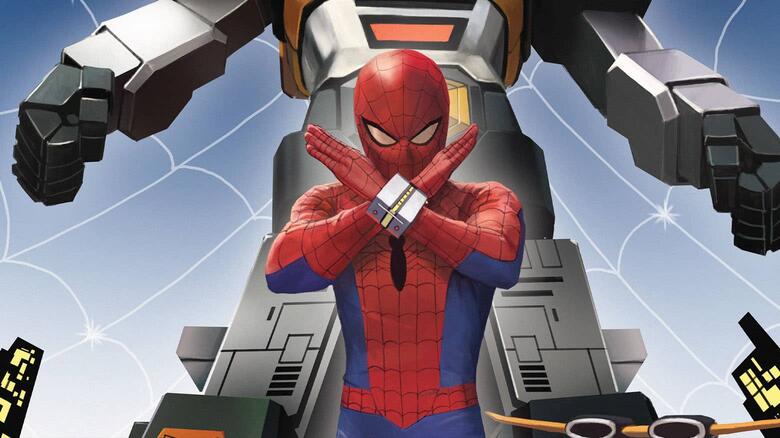
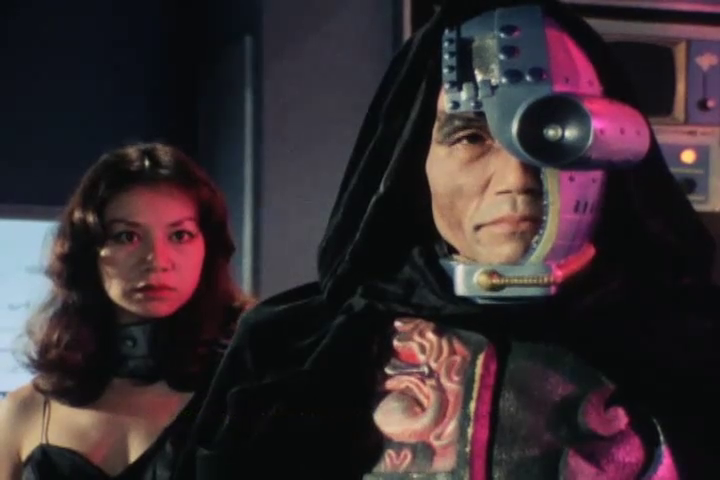
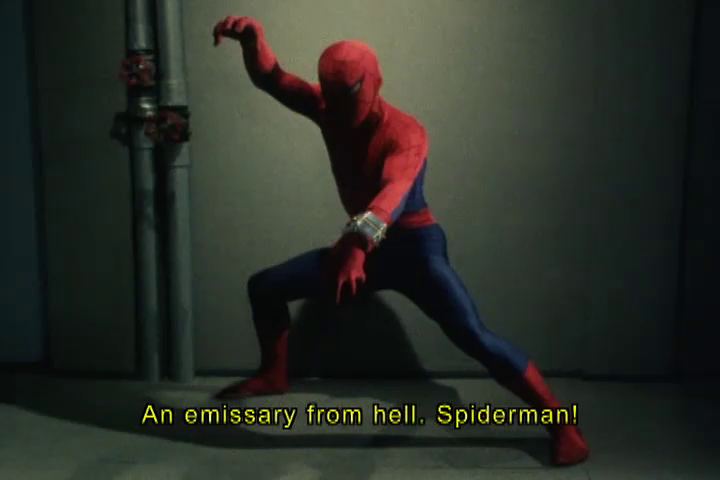
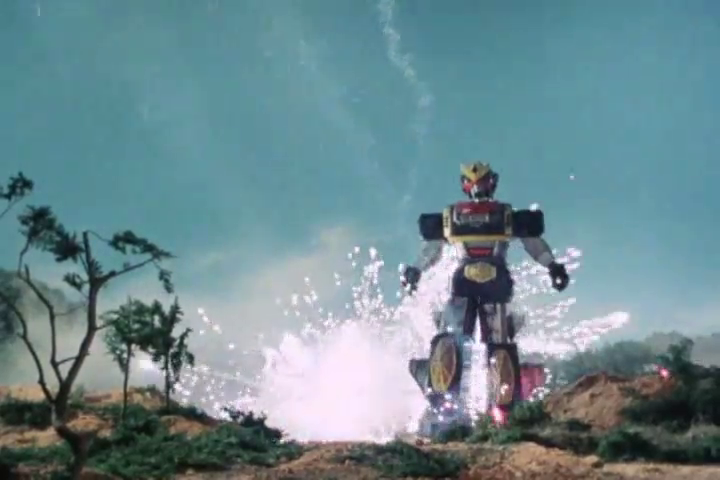
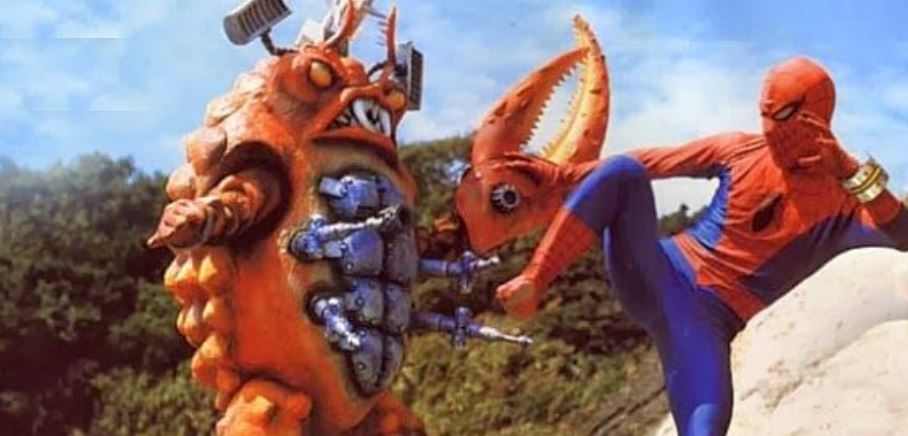
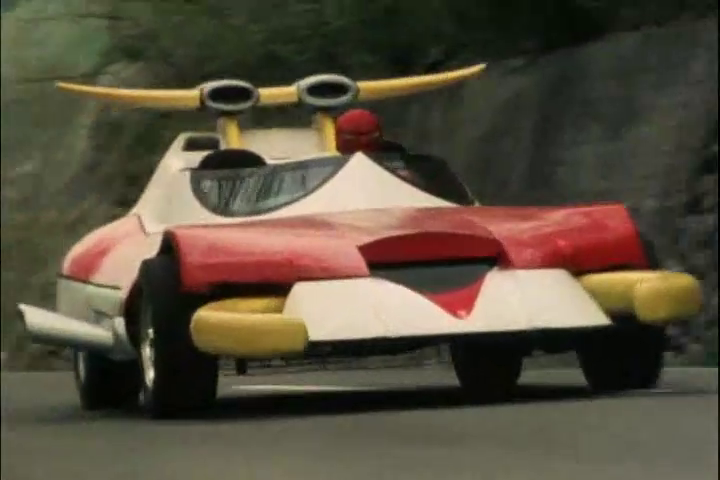
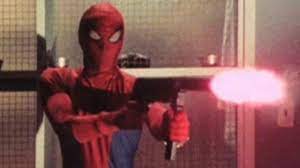

No comments:
Post a Comment